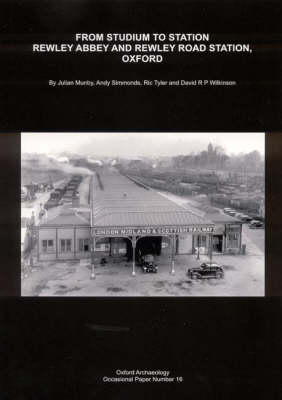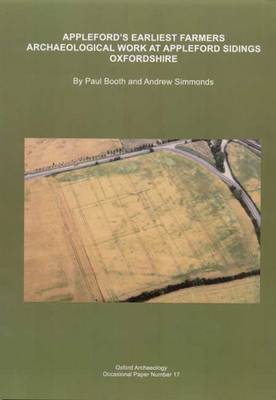Oxford Archaeology Occasional Paper
3 primary works
Book 15
Roman Rural Landscape at Kempsford Quarry, Gloucestershire
by Paul Booth and Dan Stansbie
Published 14 September 2007
An area of 6 ha just east of Kempsford was examined in 2000-2001 in advance of gravel extraction. The earliest features belonged to a field system defined by ditches probably dug in the late Iron Age. This was replaced in the early Roman period by a very regular layout of trackways linking field systems to settlements lying just outside the excavated area, all part of a programme of radical landscape reorganisation in the wider region. The nearby settlements probably went out of use in the 3rd century, but the fields probably remained in use for pasture. The main trackway was re-established in the later Roman period and a substantial timber stockade built alongside it. Occasional human and animal burials made both in the fields and at trackway junctions are an interesting aspect of the use of this landscape.
Book 16
From Studium to Station
by Ric Tyler, Dave Wilkinson, Julian Munby, Andy Simmonds, Ric Taylor, and David Wilkinson
Published 24 March 2007
This report presents the results of over 40 years of excavation, historic building survey and documentary research that has been carried out by Oxford Archaeology and others at the site of the Cistercian house of Rewley, a chantry founded in 1280. It became an abbey and stadium providing accommodation for monks studying at the university, and can therefore claim to be one of Oxford's earliest colleges. The railway station that subsequently occupied the site in 1851 followed the design of the Crystal Palace, built for the Great Exhibition, and was the last surviving representative of that internationally important building.
Book 17
From 1993-2000 Oxford Archaeology examined a sequence of rural landscapes at Hanson Aggregates' Sutton Courtenay Pit ahead of gravel extraction. The earliest of these, a rectilinear system of trackways and field enclosures, with associated waterholes for animals, devleoped from about 1500 BC. Probably contemporary cremation burials lay close by. No significant later prehistoric evidence was found, but about the middle of the 1st century AD a high-status double-ditched enclosure was established. This settlement was associated with further rectilinear field systems, enclosures and trackways and two cremation burials. This settlement went out of use after c AD 120 and subsequent activity was entirely agricultural in nature.


